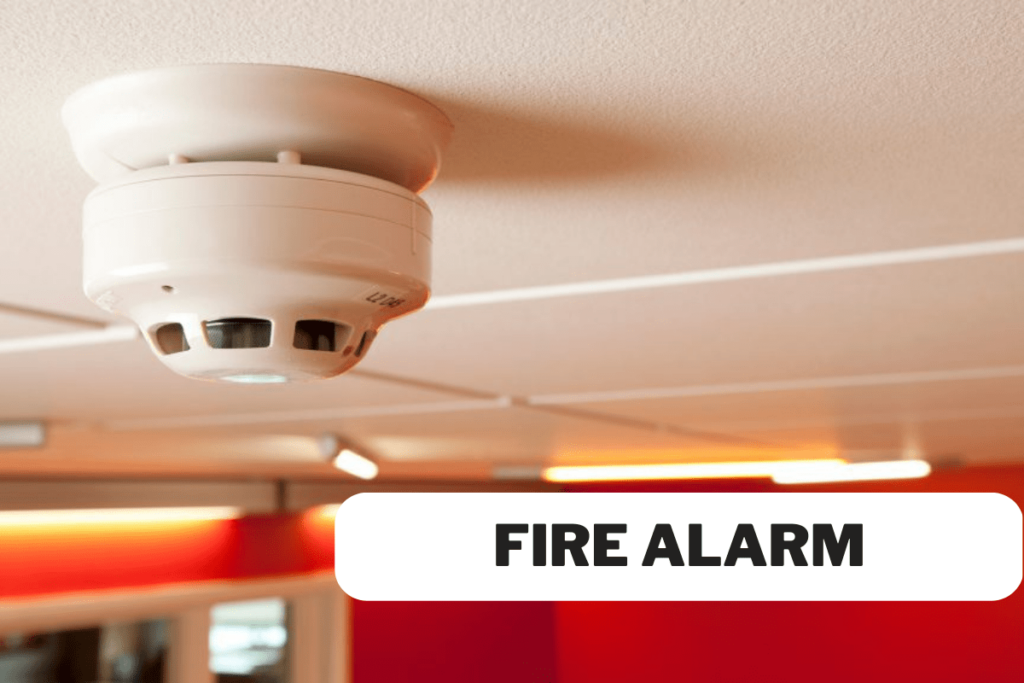Every year, fire-related incidents cause property loss and, more importantly, lives. Fires can start without warning, and often there is little time to react once a fire has been detected. This is where fire alarm systems and sensors come in, offering a warning system that can alert people of a fire before it becomes too dangerous.
This guide will examine how fire alarm work, the different types of fire alarm systems & sensors available, and the benefits of having a fire alarm system in your home or business.
What is a Fire Alarm System?
A fire alarm system is a network of devices that work together to detect and detect people of a fire. The system typically consists of a control panel, smoke detectors, heat detectors, and sometimes manual call points or pull stations. These devices work together to detect the presence of a fire and alert people in the building of the danger.
How to Do Fire Alarm Work?
Fire Alarm works by detecting environmental changes that could indicate a fire. Most fire alarms use smoke detectors, which are designed to detect the presence of smoke particles in the air. When smoke particles are detected, the smoke detector will trigger an alarm, alerting people in the building of the danger.
Heat detectors, on the other hand, work by detecting temperature changes. When the temperature in the room is high above a certain level, the heat detector will trigger an alarm, alerting people of the fire.
Manual call points or pull stations allow people to trigger the fire alarm system manually. These devices are often located near exits, allowing people to trigger the alarm and evacuate the building quickly in the event of a fire.
Types of Fire Alarm Systems:
Several fire alarm systems are available, each with advantages and disadvantages. The common types of fire alarm systems are:
Conventional Fire Alarm Systems: These systems are designed to detect fires in specific zones or areas of a building. When a fire is detected, the alarm will sound, and the control panel will indicate which zone the fire is in.
Addressable Fire Alarm Systems: These systems are designed to detect fires in specific building areas, similar to conventional fire alarm systems. However, addressable fire alarm systems can also provide specific information about the location of the fire, making it easier for people to evacuate the building quickly.
Wireless Fire Alarm Systems: These systems use wireless technology to detect fires and alert people in the building of danger. Wireless fire alarm systems are ideal for buildings where installing a wired system is difficult or impractical.
Types of Fire Alarm Sensors:
In addition to the different fire alarm systems, different fire alarm sensors can be used to detect fires. The most common fire alarm sensors are smoke, heat, and flame detectors.
Smoke Detectors: Smoke detectors are the most commonly used fire alarm sensors. They work by detecting the presence of smoke particles in the air. Smoke detectors can be divided into ionisation and photoelectric smoke detectors.
Heat Detectors: Heat detectors work by detecting temperature changes. They are typically used in areas with unsuitable smoke detectors, such as kitchens or areas with high dust or fumes.
Flame Detectors: Flame detectors work by detecting the presence of flames. They are often used in areas with high fire risk, such as industrial facilities or chemical plants.
Combination Detectors: Combination detectors combine multiple sensors, such as smoke and heat, to provide more comprehensive fire detection.
Benefits of Having a Fire Alarm System:
A fire alarm system in your home or business can provide several benefits. The significant benefit is that it can save lives. Fire alarm systems can detect fires early, giving people more time to evacuate the building and avoid potential injury or death.
Fire alarm systems can also help to minimise property damage. Early fire detection means that firefighters can be called to the scene more quickly, reducing the damage the fire can cause.
Finally, having a fire alarm system can provide peace of mind. Knowing you have a system to detect and alert you of a fire can help you feel secure in your home or business.
Advancements in Fire Alarm Technology
Advancements in technology have led to the development of more advanced fire alarm systems. One of the most significant advancements is intelligent fire alarm systems. Intelligent fire alarm systems use advanced algorithms to analyse data from the various sensors in the system. This allows the system to detect fires more accurately, reducing the risk of false alarms.
Another advancement in fire alarm technology is the use of wireless systems. Wireless fire alarm systems are ideal for buildings where installing a wired system is difficult or impractical. They can also be installed quickly, reducing the disruption caused by installation.
Conclusion:
In conclusion, fire alarms are a crucial safety feature that can help to protect lives and property in the event of a fire. Fire alarm systems use a network of devices, including smoke detectors, heat detectors, and manual call points, to detect the presence of a fire and alert people in the building of the danger.
You may also like
-
Classified Websites in India: A Digital Marketplace for All
-
Why Sod Installation is the Quickest Way to a Beautiful Lawn?
-
The Role of Statutes and Case Law in Policy Limit Access
-
Setting Up a Home Theater with LG CineBeam Q The Ultimate Guide
-
Business Listing Sites in USA: 2025 Guide for Better Online Visibility

